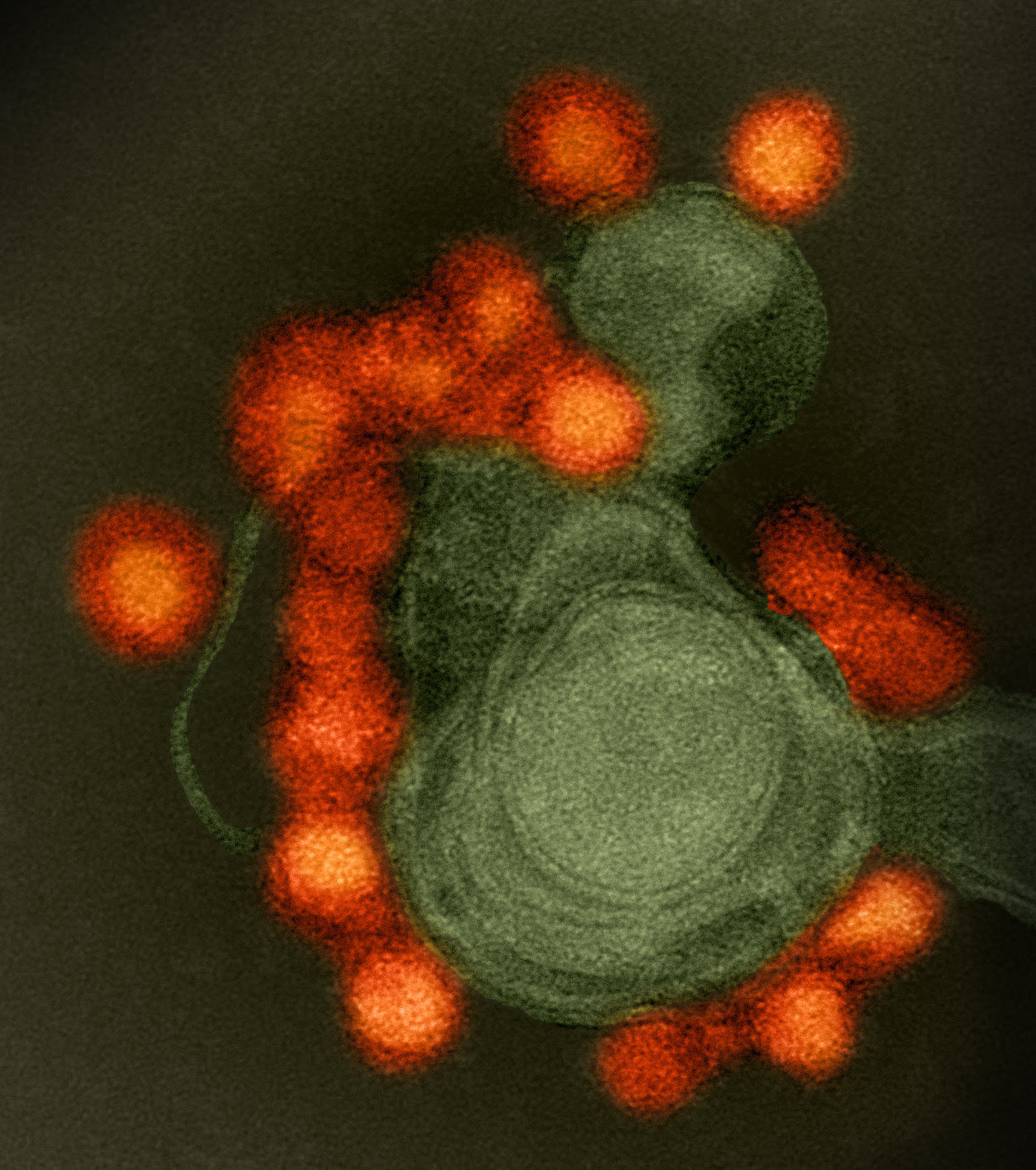
Method for Attenuation of Flaviviruses and Live Vaccine Development

Transmission electron microscope image of negative-stained, Fortaleza-strain Zika virus (red), isolated from a microcephaly case in Brazil. Zika virus is a member of the family Flaviviridae. Credit: NIAID
Many members of the Flaviviridae family are emerging and re-emerging human pathogens that have caused outbreaks of devastating and often fatal diseases, such as yellow fever, dengue fever, and Zika virus. No single attenuation strategy is sufficient to prepare a safe, efficacious, and immunogenic live attenuated virus vaccine that will work universally forFlaviviridae.
NIAID researchers have developed a method for attenuating a flavivirus or chimeric flavivirus using a synergistic dual strategy involving inserting miRNA-targeting sequences to restrict virus replication in target hosts, cells, and/or tissues and placing one or more flavivirus genes under translational control of an internal ribosome entry site (IRES). Read more about this exciting collaboration opportunity: https://www.ott.nih.gov/






















.png)











No hay comentarios:
Publicar un comentario